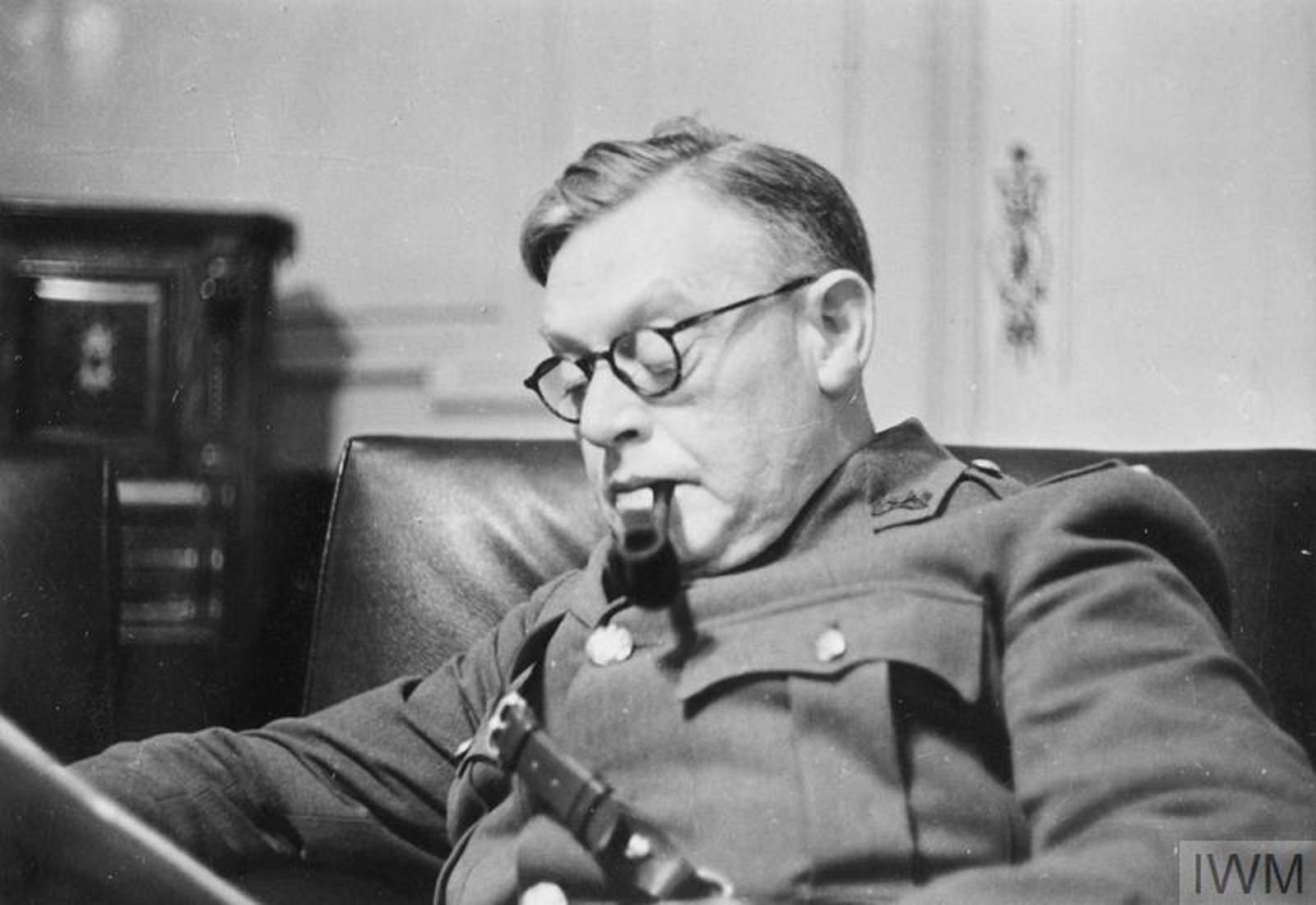Major Samson, an officer at Latchmere House, MI5 Intelligence Centre in World War II. Photo courtesy Imperial War Museums.
The newly declassified British Security Service (MI5) World War Two “watcher” advice provides a unique insight into the day-to-day realities of wartime espionage. This guidance, reveled in a wartime booklet in issued to newly recruited MI5 operatives responsible for clandestinely tailing suspected enemy agents, showcases the pragmatic yet peculiar world of surveillance. While espionage has often been glamorized in popular culture, this advice paints a much different picture—one rooted in patience, precision, and unpredictability.
The first rule of thumb for any watcher, according to the advice, was the necessity to blend seamlessly into their surroundings. Far from the debonair spies depicted in movies, these operatives were instructed to be of a “nondescript type.” The document even specified the ideal physical attributes for watchers, recommending individuals of average build—between 5’7″ and 5’8″ in height. This would ensure they did not stand out in a crowd. In an effort to avoid drawing attention, facial disguises such as false beards or mustaches were categorically discouraged. These artificial disguises were deemed impractical, particularly under scrutiny in bright lights or crowded public transportation settings where detection risks were high.
For watchers tasked with tailing suspects, the advice provided meticulous instructions. Operatives were advised to keep a deliberate distance of 25 to 30 yards behind their target, maintaining surveillance without arousing suspicion. To remain inconspicuous, watchers were encouraged to stay on the opposite pavement wherever circumstances permitted. Such measured pacing of tailing was designed not only to avoid detection but also to prepare the operative for any sudden movements or evasive maneuvers on the part of the suspect.
In scenarios where suspects attempted to evade surveillance—such as boarding a vehicle or train at the last possible moment—watchers were trained to react swiftly and adaptively. They were expected to anticipate such maneuvers and to maintain their cover, an essential skill that required both strategic foresight and nerves of steel. The advice even addressed the possibility of high-stakes pursuits, such as taxi chases. In such situations, watchers were instructed to carry sufficient cash for fare expenses and to have a plausible cover story ready at all times. This preparation was vital not only for logistical purposes but also for maintaining the operative’s anonymity should questions arise during the chase.
Contrary to the glamorous, high-adrenaline depictions of spies in films and novels, the advice underscores the often-monotonous nature of observation work. Watchers were reminded that their role demanded unwavering patience and attention to detail. Their duties involved countless hours of quiet observation, tracking every move of the suspect without ever breaking character or losing focus. This solitary nature of the job served to highlight the sheer discipline and resilience required of wartime intelligence operatives.
The MI5 guidance stands not only as a historical artifact but also as a window into the realities of wartime intelligence operations. Beyond the thrilling tales of espionage that dominate cultural narratives, this advice sheds light on the complex blend of strategy, endurance, and adaptability necessary to the profession.
Through its revelations, the document challenges popular misconceptions about espionage, grounding it firmly in reality. The portrayal of watchers as ordinary individuals—yet extraordinary in their commitment and competence—offers a humanizing perspective on an often-romanticized field. Far from being flashy and theatrical, wartime surveillance was a profession built on painstaking effort, where every decision carried weight, and every move required precision.
The advice further serves as a reminder of the crucial role played by operatives in safeguarding national security during a time of unprecedented global turmoil. Their dedication to their craft, despite the inherent challenges and risks, speaks to the importance of intelligence work in shaping the outcome of the war. As visitors explore the exhibition, they are given the opportunity to appreciate the legacy of these unsung heroes, whose contributions were instrumental in the fight against enemy agents and in securing victory during World War Two.
Exhibition at the National Archives
This fascinating document is showcased as part of an exhibition at the National Archives in Kew, United Kingdom, opening this spring in partnership with MI5 and running 5 April to 28 September 2025. The exhibition is free.
Delve into the evolving landscape of espionage and security challenges through a collection of authentic case files, photographs, and documents, paired with the actual tools employed by spies and those who tracked them throughout MI5’s 115-year legacy.
From the suspense-filled tales of counter-espionage and audacious double agents during the world wars, to gripping Cold War revelations and modern counter-terrorism efforts, this remarkable exhibition offers a behind-the-scenes look at one of Britain’s most renowned institutions
Final Thoughts
The newly declassified “watcher” advice not only enriches our understanding of wartime intelligence but also serves as a poignant reminder of the dedication, strategy, and patience demanded of these covert operatives. It provides a glimpse into the real-life stories behind the enigmatic world of espionage, offering a more grounded and nuanced perspective than the dramatized accounts we’ve come to know. Whether you’re a history enthusiast or merely curious about the realities of surveillance work, the document offers invaluable insight into the world of wartime MI5.
Resource
The National Archives
nationalarchives.gov.uk
